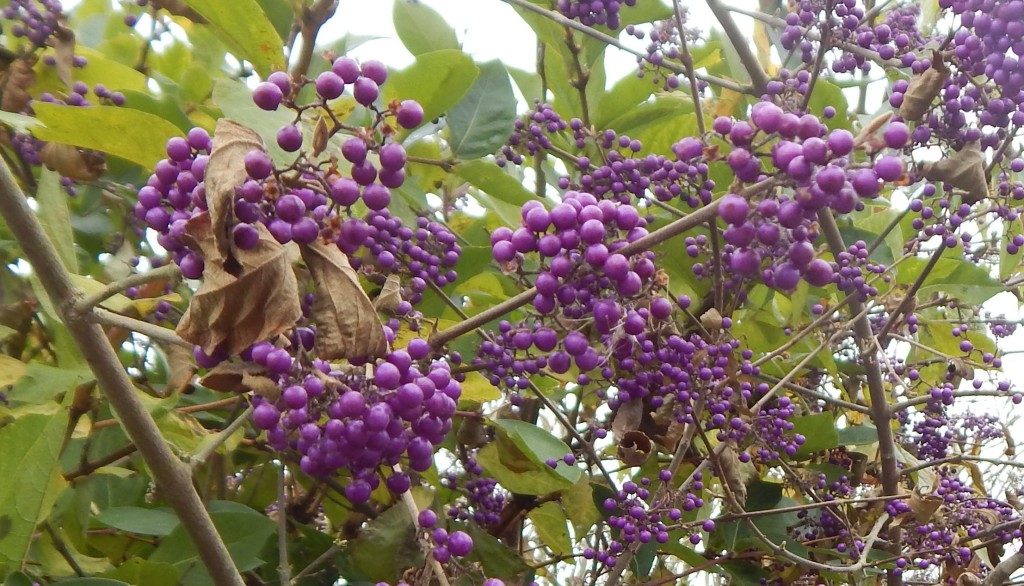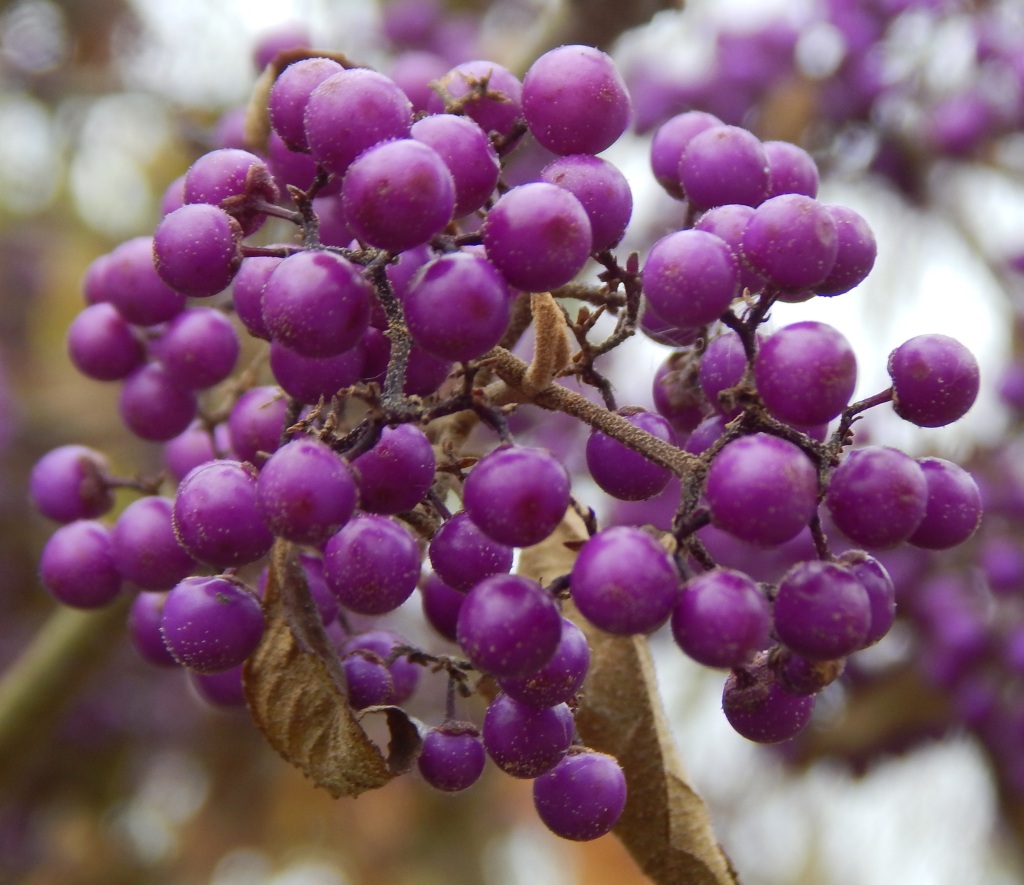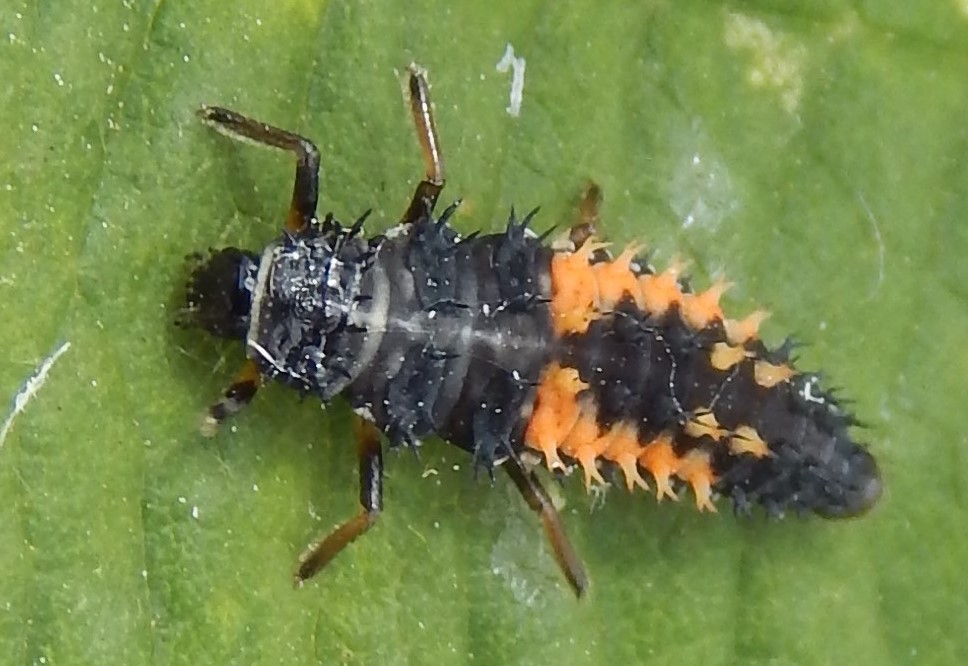
[169] Harmonia axyridis, Harlequin Ladybird
Introduction
Harmonia axyridis, the Harlequin Ladybird, is an invasive ladybird that has recently spread across Britain.
It is also called the Multicoloured Ladybird or Asian Ladybird and has many other names. It has been called the Many-named Ladybird!
As noted with [086] the Seven-Spot Ladybird, these insects may be called Ladybugs, Ladybird Beetles or Lady Beetles. In context Harmonia axyridis may just be called a Harlequin.
Taxonomy
Kingdom – Animals
Phylum – Arthropods
Class – Insects
Order – Coleoptera (Beetles)
Family – Coccinellidae (Ladybirds)
Genus – Harmonia
Scientific Name – Harmonia axyridis
Its original name was Coccinella axyridis.
Name
The well-known Harlequin character is noted for his colourful, chequered coat.
In Greek mythology, Harmonia, daughter of Ares and Aphrodite, was the goddess of harmony.
I can’t trace ‘axyridis.’
Description
As all beetles, this species is holometabolous. Apart from a very occasional caterpillar, this is the only insect you are likely to see in its larval stage. To be honest, if you look around you at plants in the summer you are very likely to see a few of these.
They have five instar stages of which the last two are more often seen. They are mostly black with some orange markings and spiny defences along their backs. (The Seven-spot Ladybird has a similar larval stage with less orange markings.)
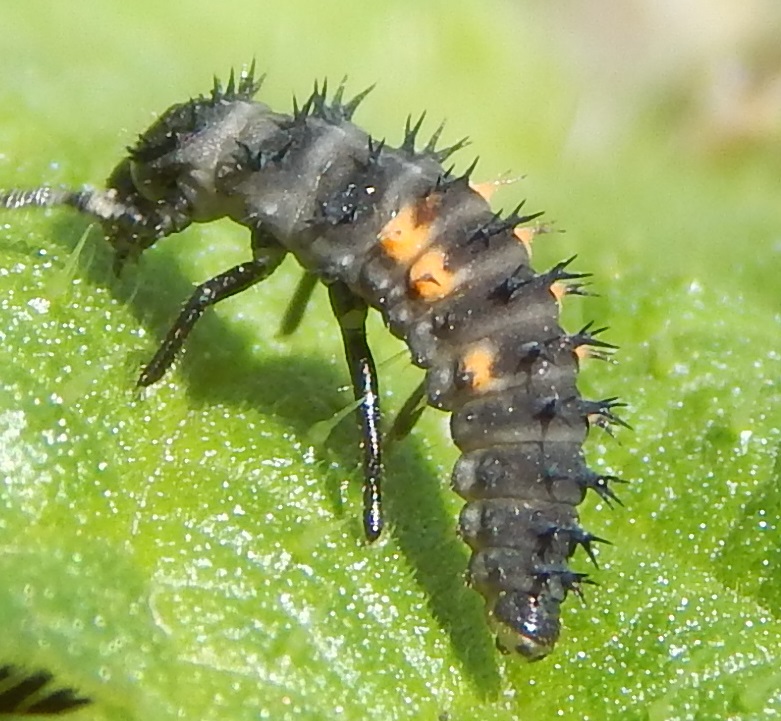
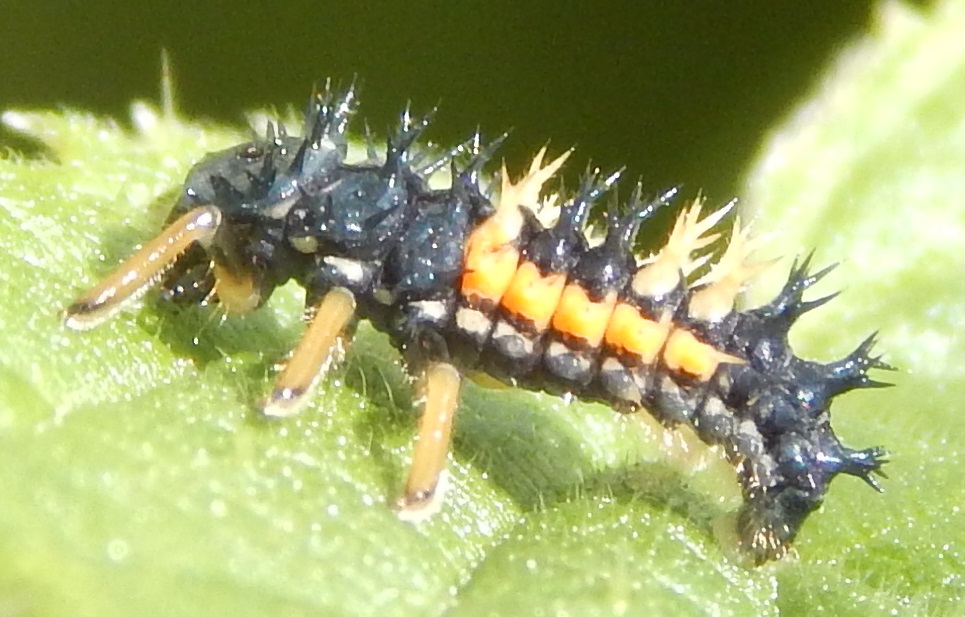
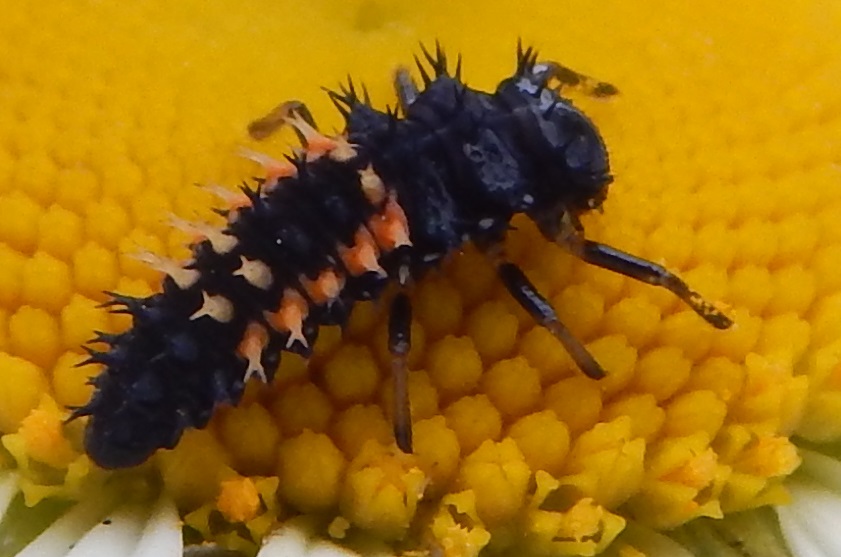
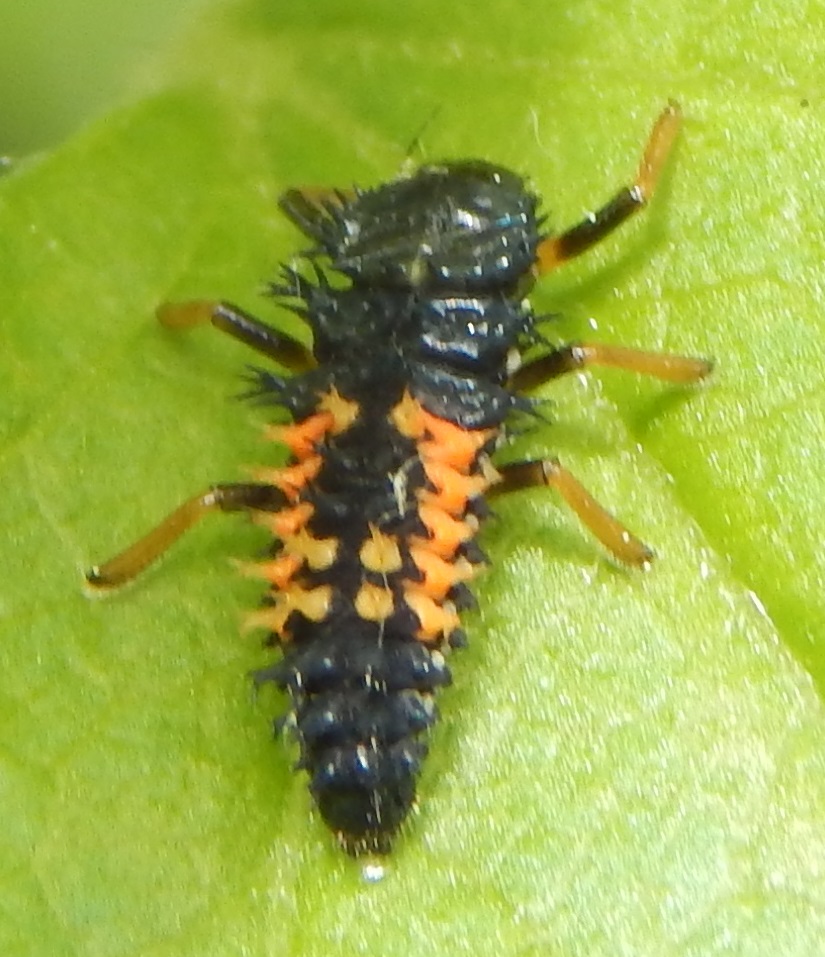
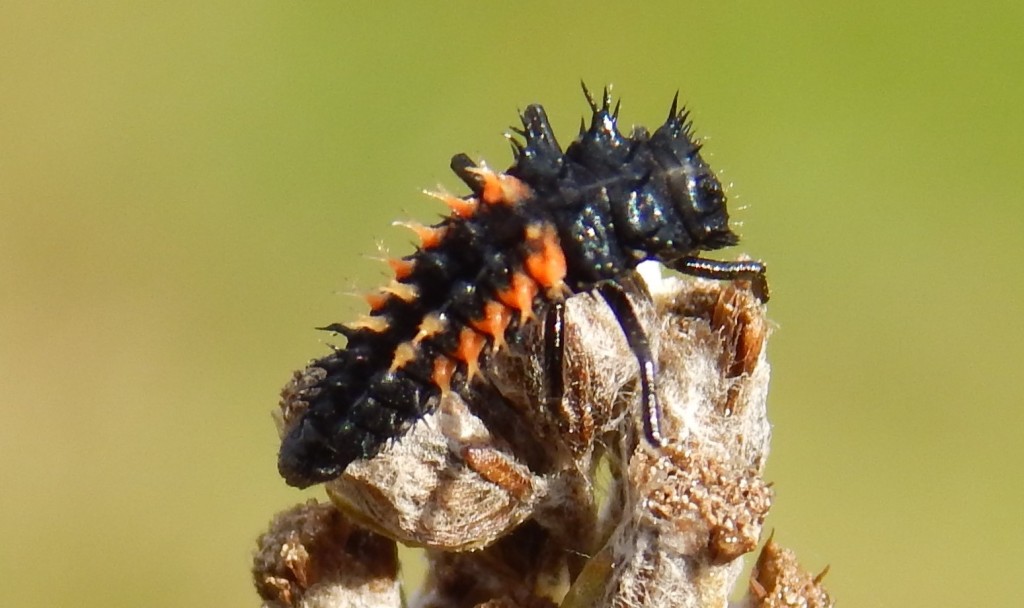
They just roll up and pupate where they are on a leaf.
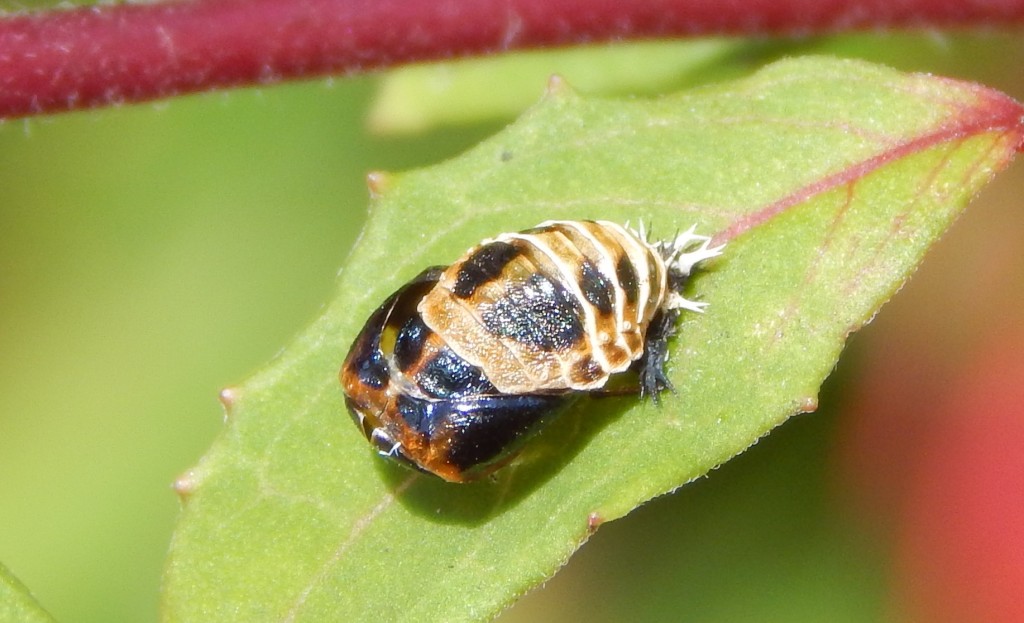
The adult insect is similar in size and shape to the Seven-spot Ladybird and may be similar in its colouring, but it has a number of different forms. It is said to have a common form with various shades of orange to red elytra and from zero to twenty-two spots of variable size – but this covers a large number of different forms. Other forms may be black, with or without a number of spots, or more complex patterns of black, orange and red.
The pronotum usually has a pattern with more areas of white than the Seven-spot Ladybird and this can be a useful identification feature.
[Note: The thorax of an insect is formed of three parts, each connected to a pair of legs. The front section is called the prothorax, while the other two segments bear the wings or, for beetles, elytra. The prothorax consists of the upper pronutum, the lower prosternum and two lateral propleurons. All of this means that what entomologists call the pronutum is what you might think of as its ‘shoulders,’ or the part of its back in front of the wings.]
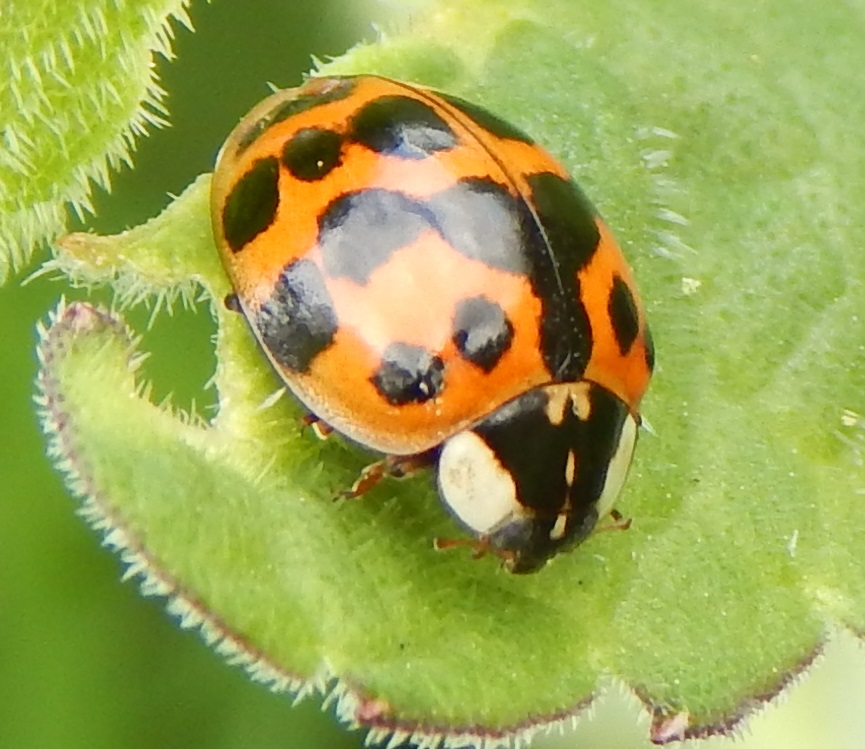
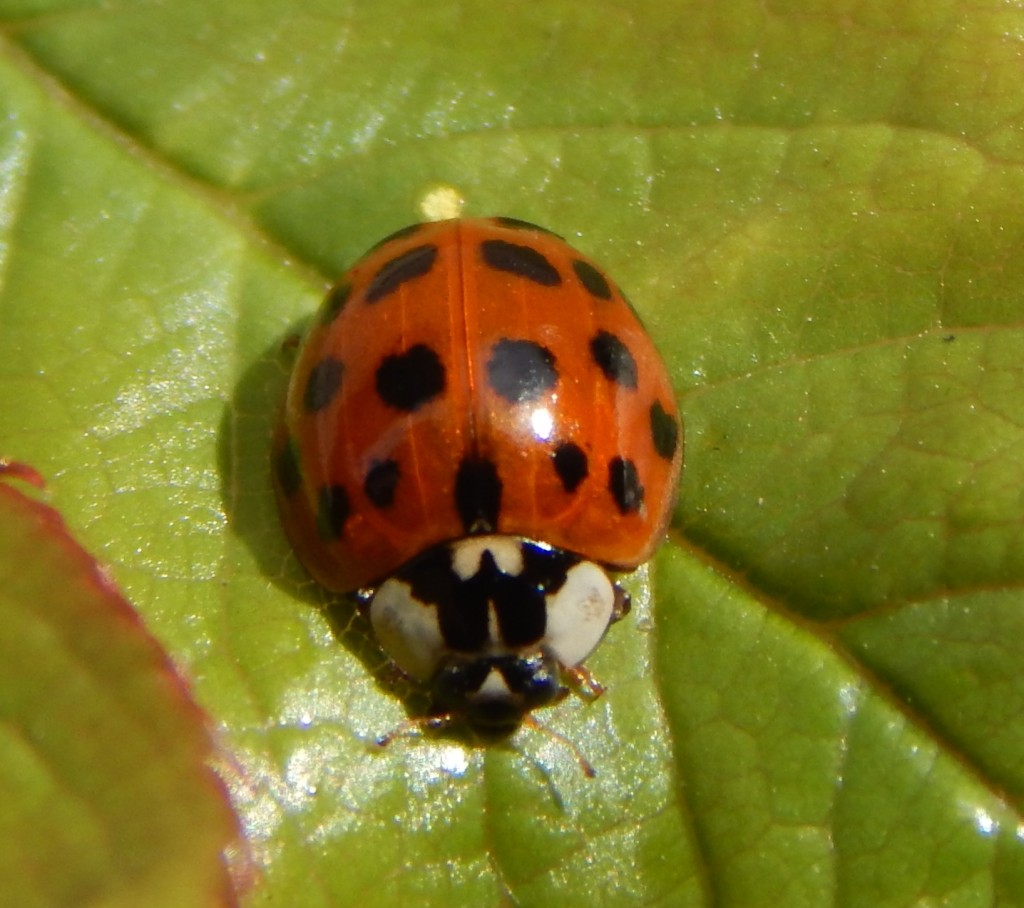
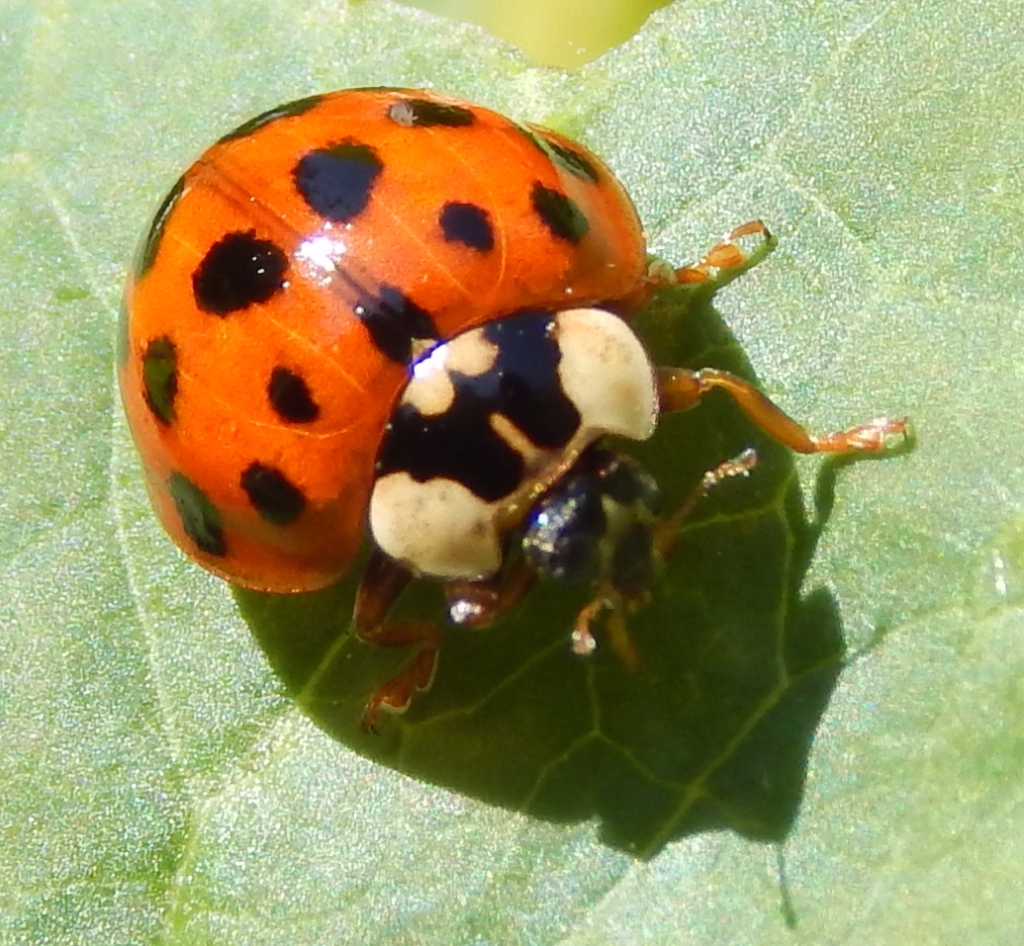
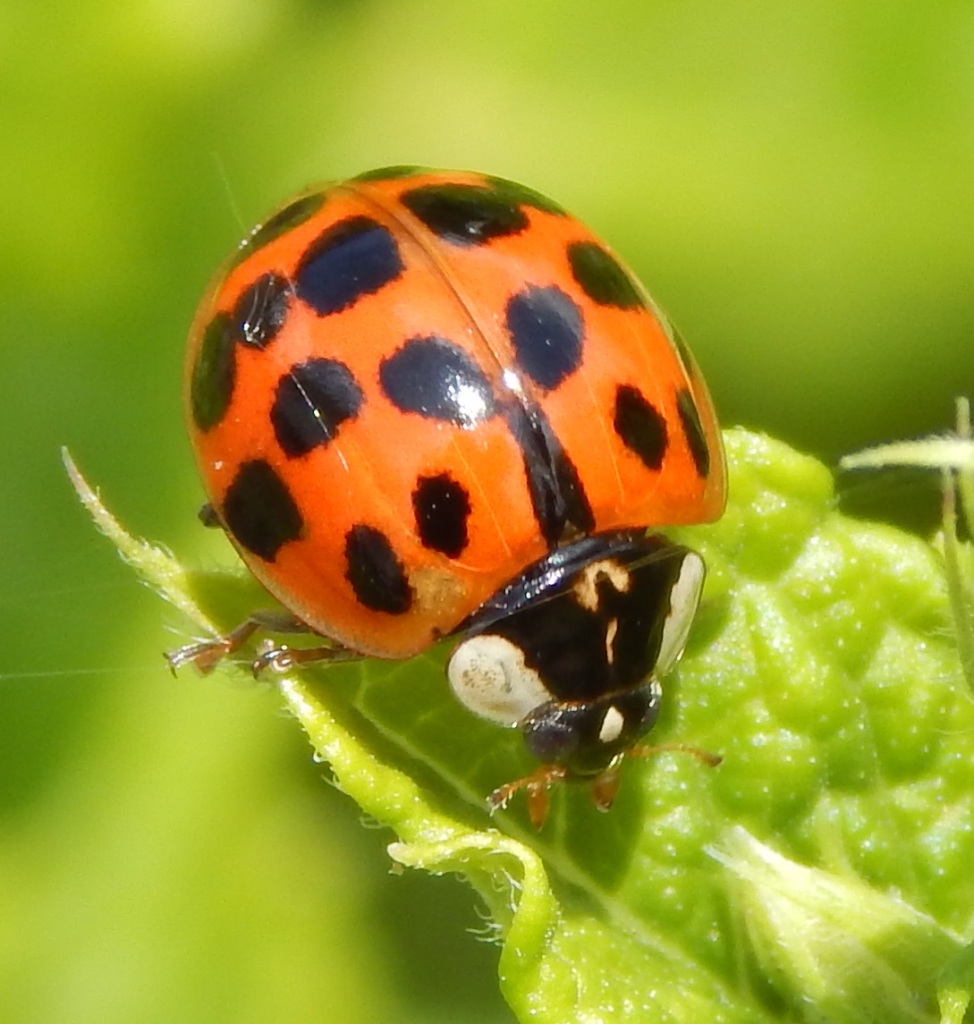
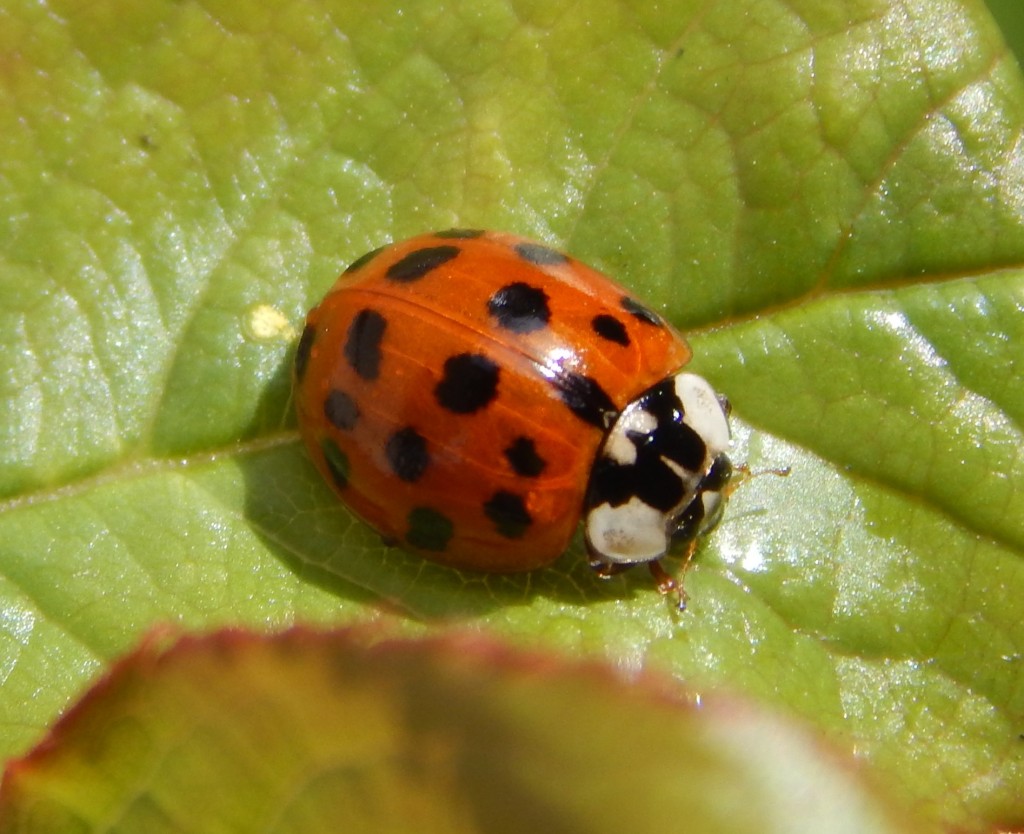
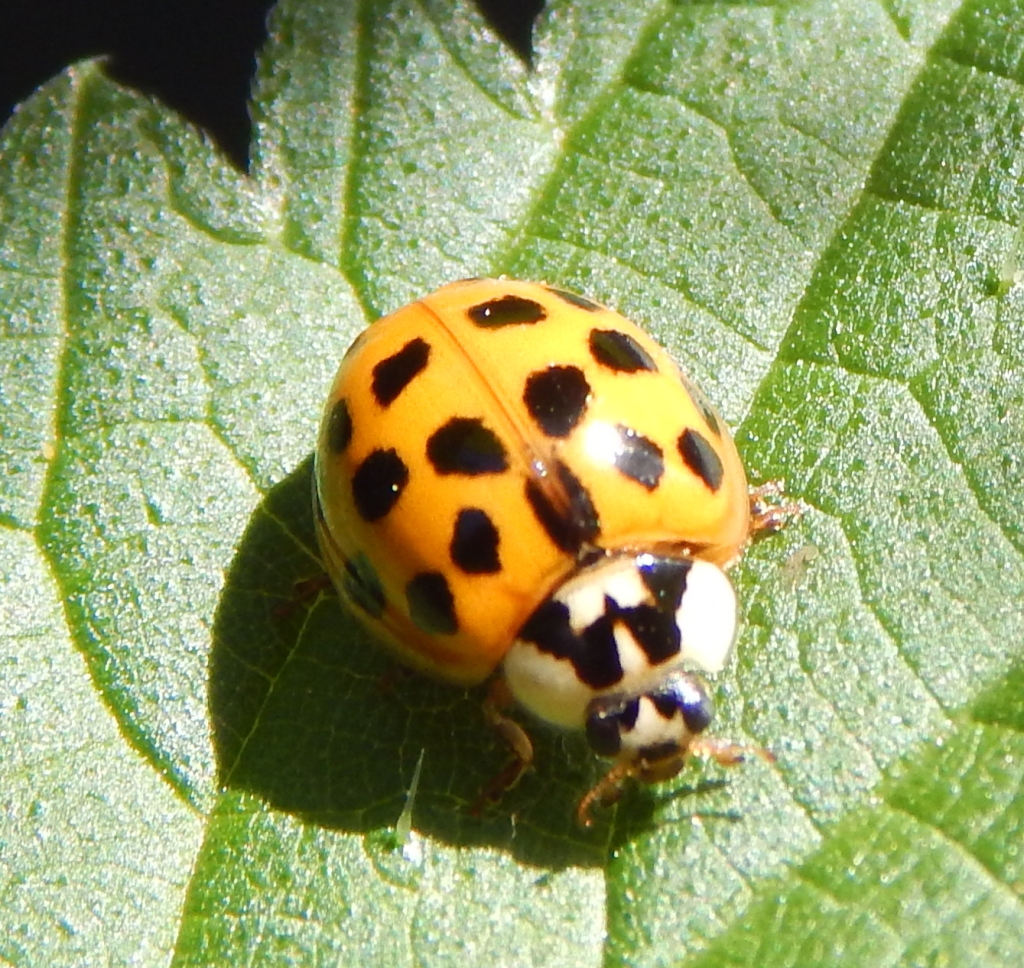
It is generally considered to be one of the worst invasive insects worldwide. In Europe is spreads to the detriment of native species. It competes with and may even eat other ladybird species.
It was first sighted in the UK in 2004 and was declared the fastest invading species in 2015. It has led to a significant decline in native British Species such as the Seven-spot Ladybird.
They feed voraciously on Aphids.
Habitat and use
The Harlequin is native to parts of East Asia but has been very widely introduced elsewhere to control [217] Aphids. where it has been introduced it tends to spread rapidly and become Invasive.
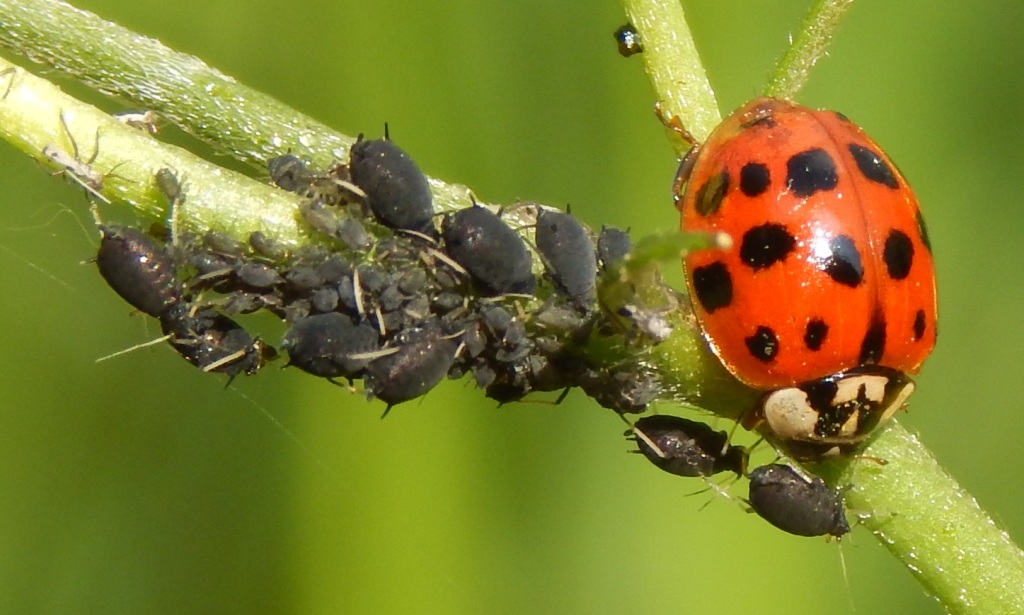
Other Notes
You can find these insects on Summer by looking around on plants that might have aphids. They are easier to spot that the aphids they might have eaten.
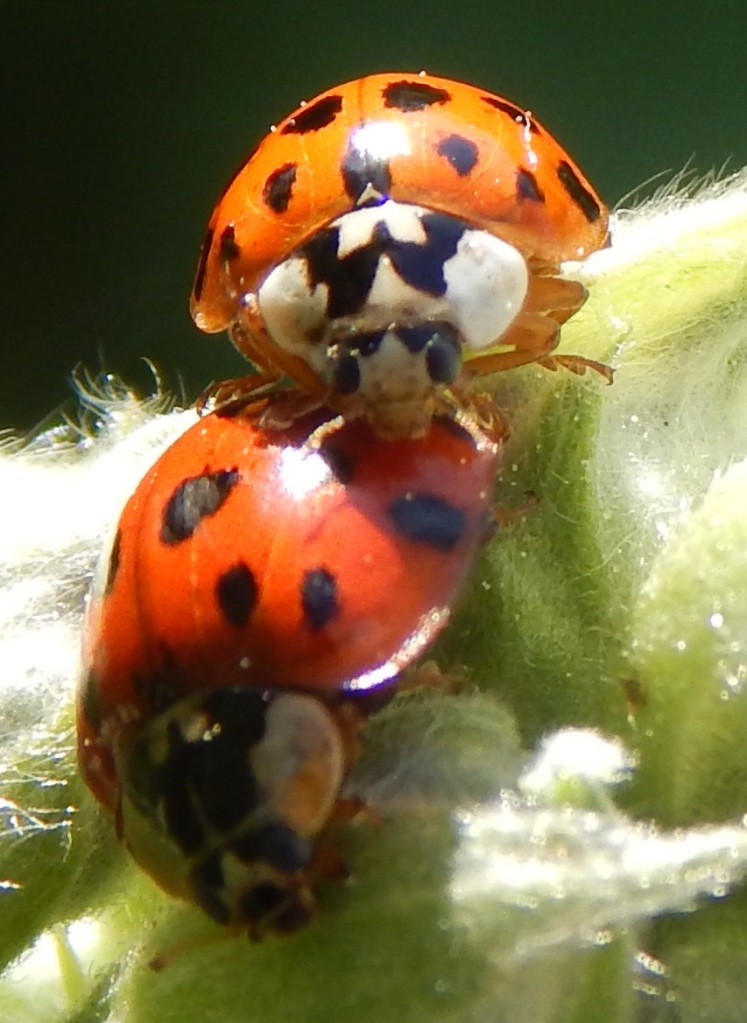
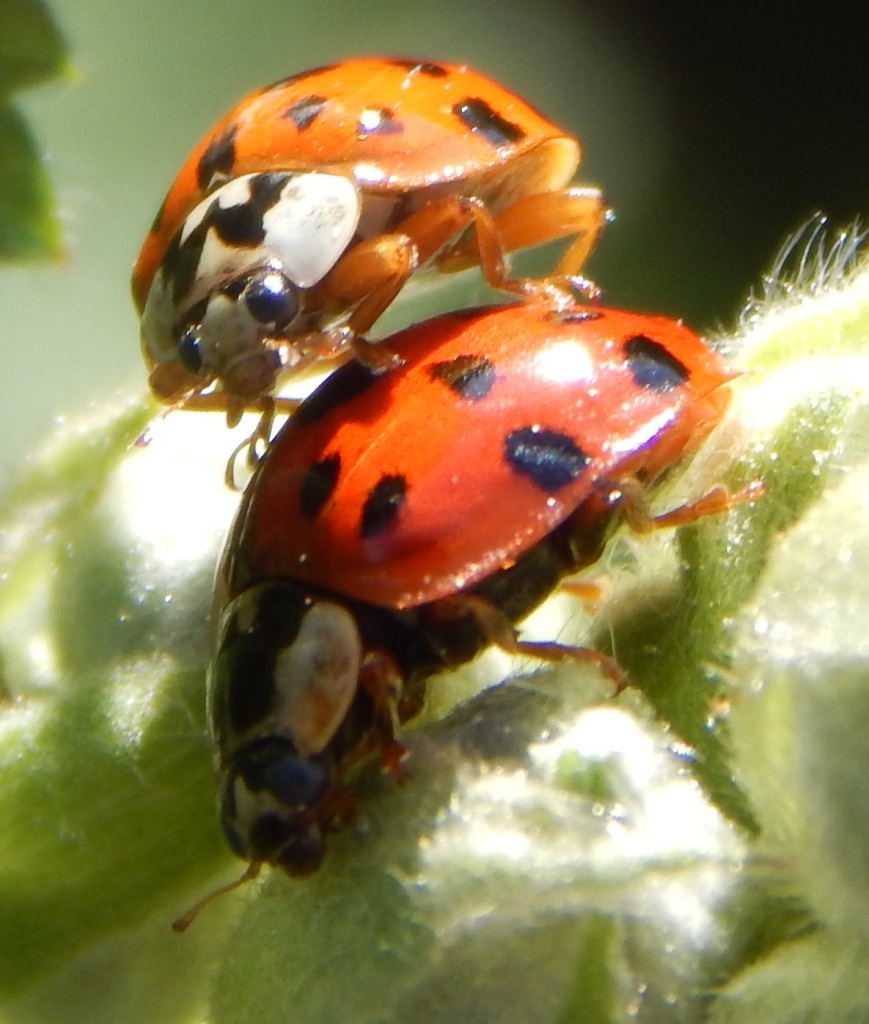
See also
There are several other species of Ladybird that may be found in Britain, generally much smaller than the Seven-spot and Harlequin. See [278] 14-spot Ladybird.

